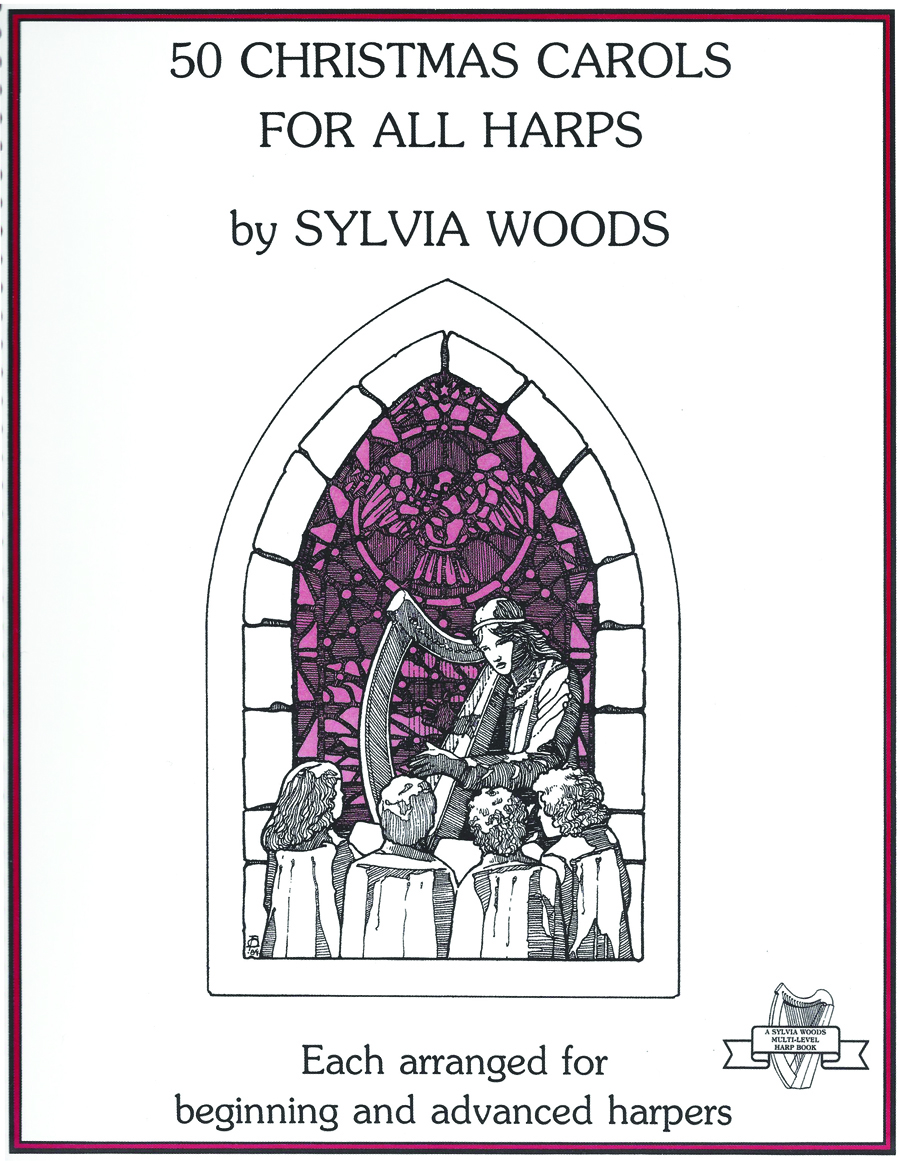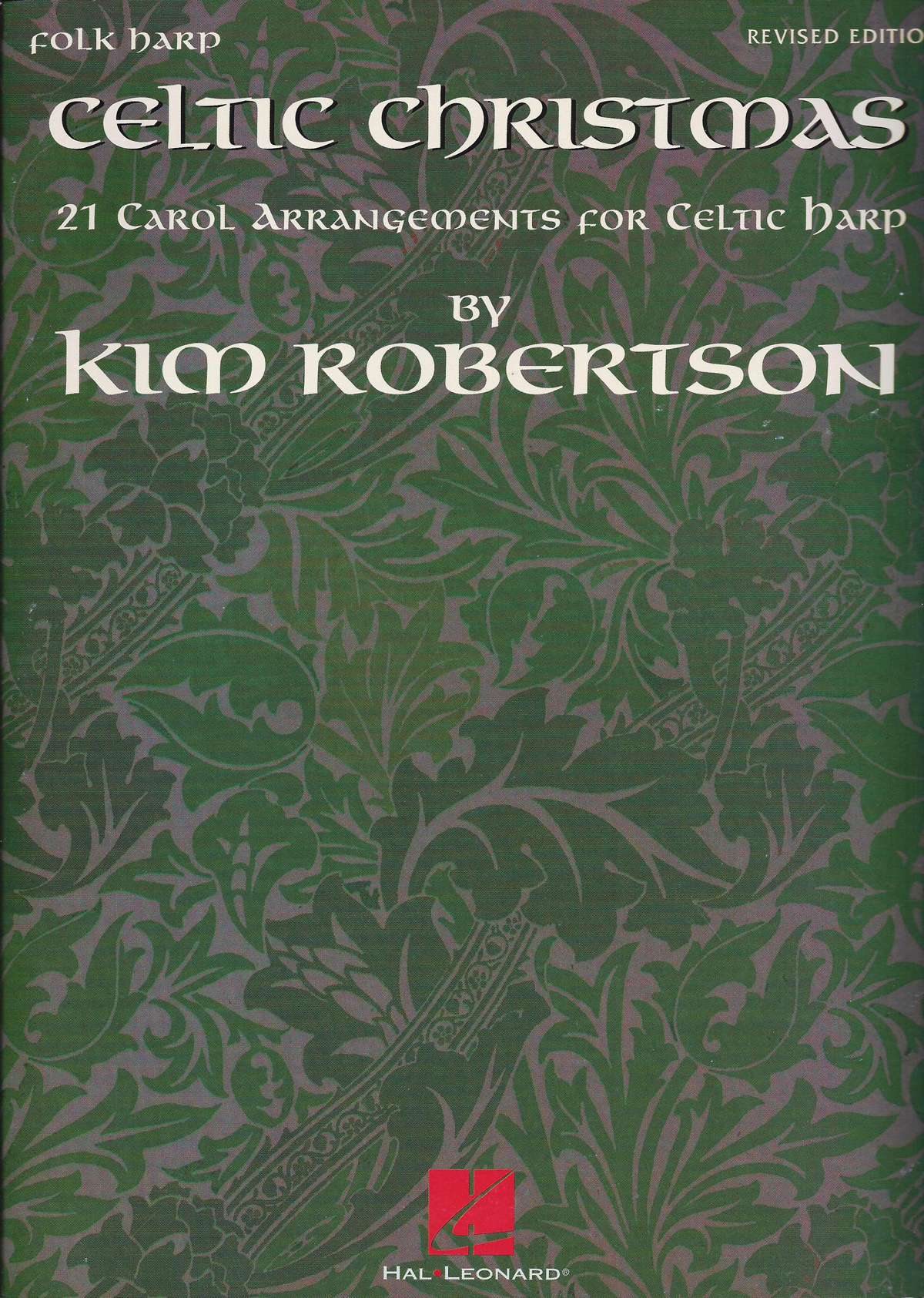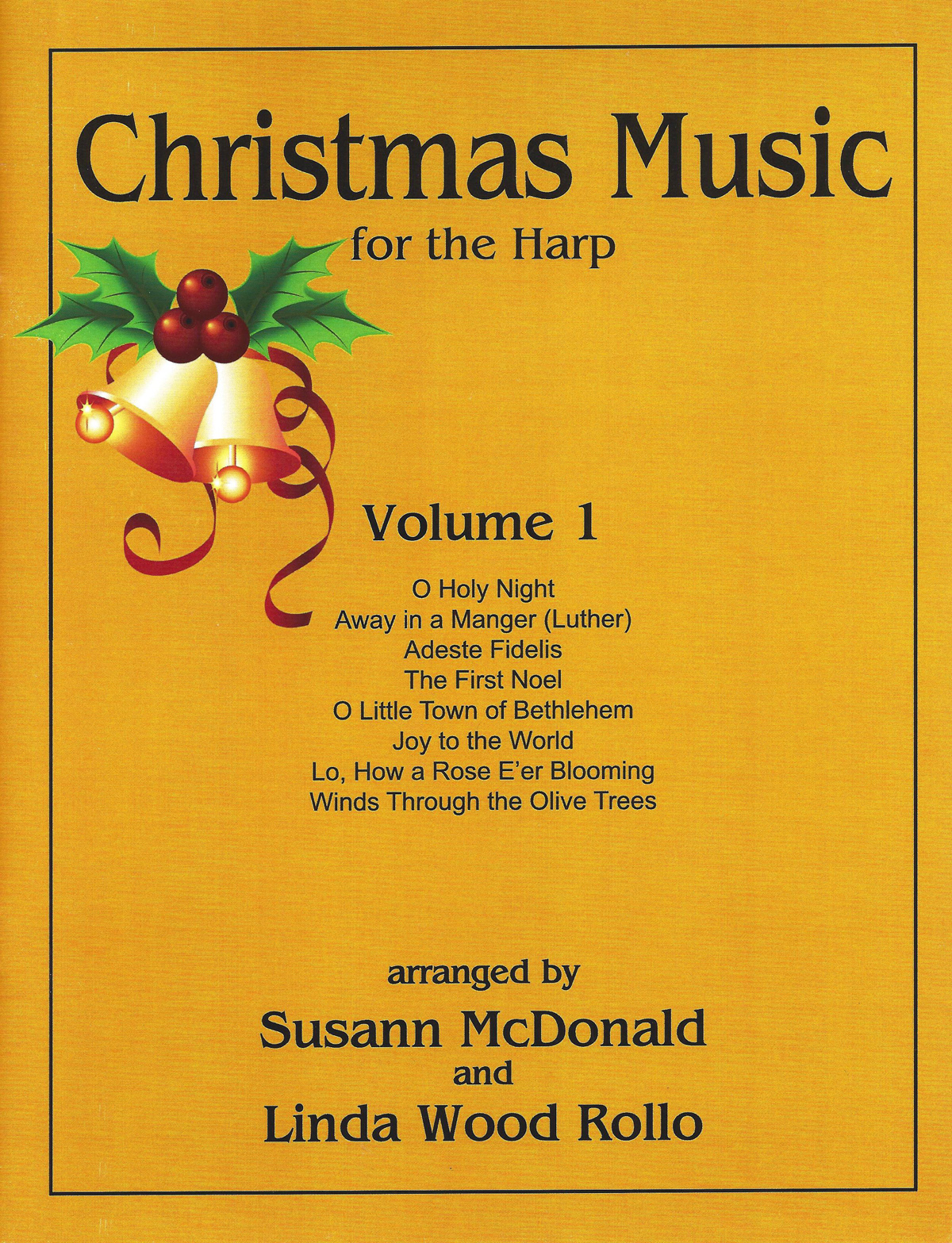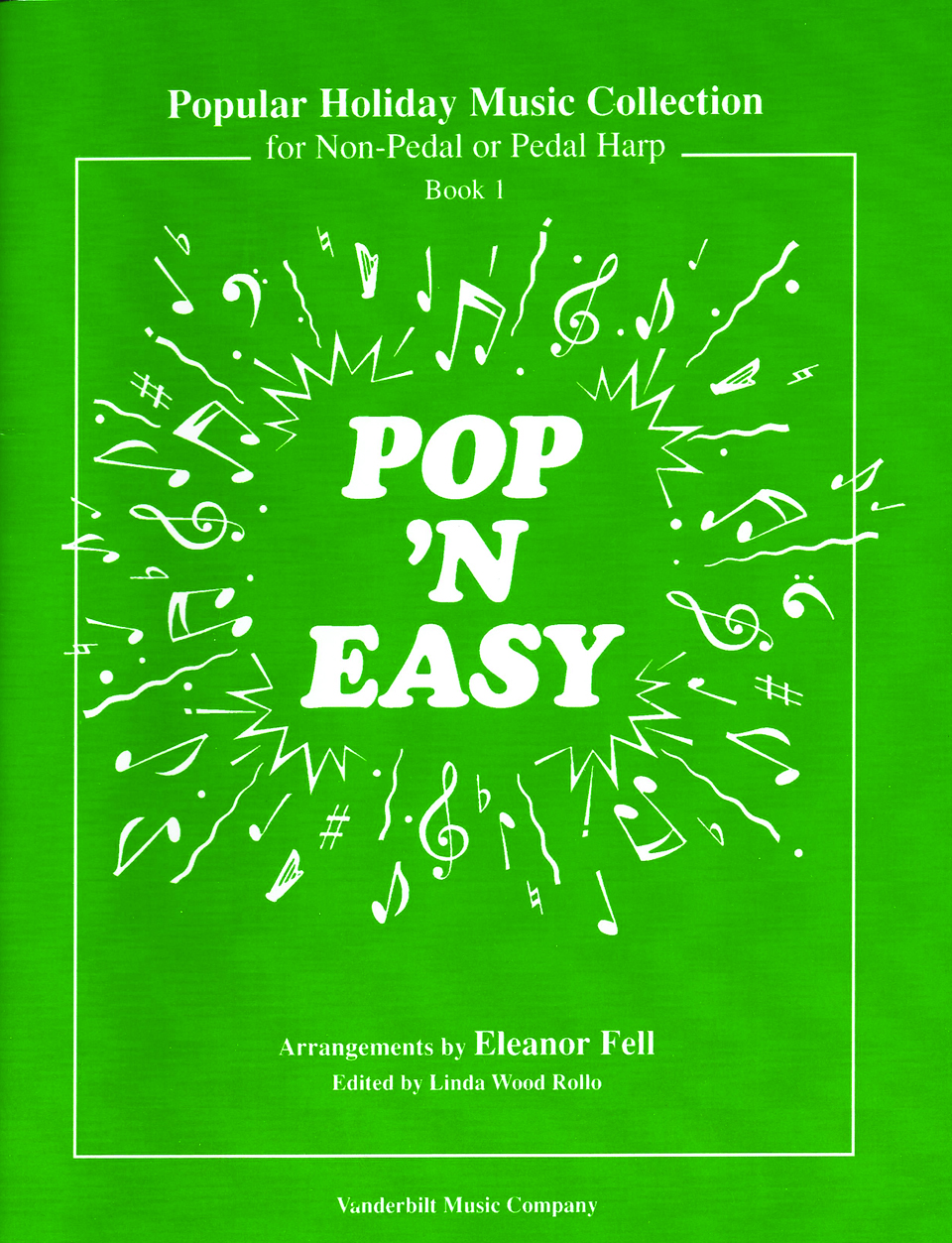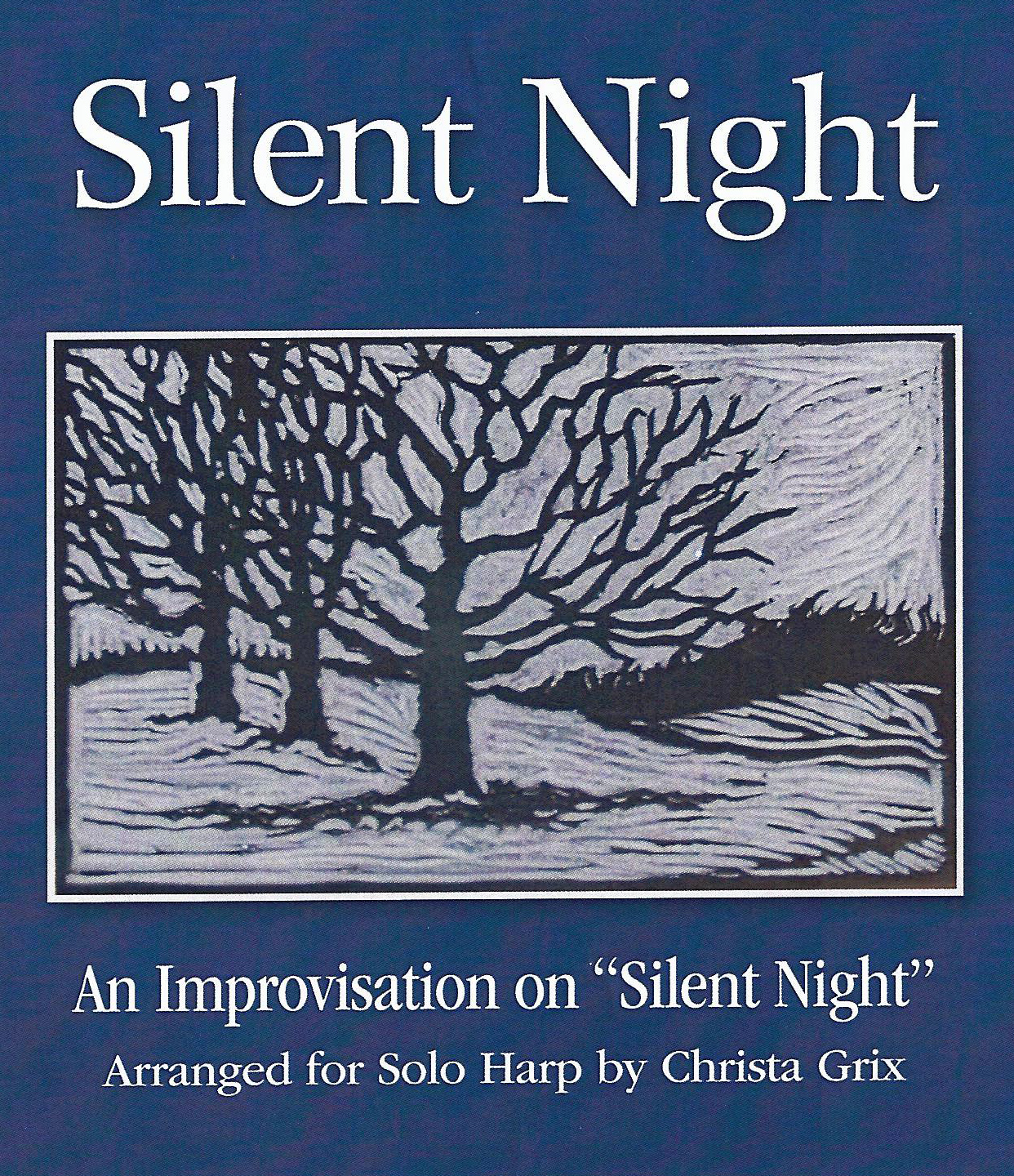
—by John Wickey
Once upon a time, in a land not so far away (Detroit, to be precise), a young harpist was asked to play his first paid Christmas gig—10 minutes of solos in front of a big church congregation for three services. Around that same time there was also a Christmas party or two to play, his first time through A Ceremony of Carols, and/or the Nutcracker, and/or the Saint-Saëns Christmas Oratorio—in short, there were a whole lot of notes to learn in a very short amount of time.
And lo, throughout the barren land (i.e., the music cabinet at school), the Christmas books were lonely and shivered together in their wee folder—a dog-eared copy of the Salzedo Christmas Harp Collection, The Harpist’s Book of Christmas Music by Betty Paret, and a few arrangements by May Hogan Cambern that were printed but looked more like manuscript.
The Betty Paret seemed too basic for public solos. “Certainly,” he thought, “we can do something more impressive.” The Cambern arrangements* were nice, but what if the lighting at the church is poor? “I’ll never be able to read that squiggly writing,” he thought.
And so, it came to pass that your correspondent’s first public Christmas solos were the four short fantasies at the start of the Salzedo collection. Short seemed to imply that there wouldn’t be so much music to learn. No page turns seemed like a good thing. Best of all they were a little different than your typical carols. “I’ll just whip those together in no time,” he thought.
Wrong. So wrong. The rich sonorities were a byproduct of chord stretches the size of the White House Christmas tree. The sparkly contrapuntal lines came wrapped in tricky fingerings better suited to an elf. There were jumps and slides and first-octave melody and everything had to be fast and loud and “Oh my jeepers why’d I pick these darn things? Is it too late to learn something else?”
“Mind over matter,” teacher said. Gulp.
In hindsight, I’m really glad I learned those pieces and ultimately the rest of the Salzedo collection because they really are impressive and great technique builders. But…
These days, just entre nous, should you find yourself in need of Christmas solos or want music for your gig book, there’s no need to work nearly as hard as I did those first seasons (unless you really want to). There’s so much more music available!
Most people I meet who’ve been playing for a year or less will avoid a public performance, but in the event that there’s a loved one in your life who just won’t take no for an answer, pick up a copy of Sylvia Woods’ 50 Carols for All Harps for lever or pedal (L/P). These handy arrangements each come in two versions—easy and easier still—and they include lyrics, which gets you through most situations involving eggnog and a soprano. For little fingers in this predicament there’s Eleanor Fell’s Pop ‘N’ Easy Popular Holiday Music Collection (L/P). The notes are big and there’s sound board tapping and glissandos—oh boy! Plus, this gem includes some Chanukah tunes and “Auld Lang Syne.”
At the point that a harpist can arpeggiate in two hands and roll a chord, the options expand considerably. If a friend asks for suggestions, I pull out Sunita Staneslow’s collection, Christmas Eve (L/P) and offer to play a sample. Without revealing the title, I start the 16-bar introduction to “Bleak Midwinter” and, generally, by the time I get to bar 14 (when the tune is recognizable) the listener sighs and wants to know the name of the book. I don’t think they do this just because they heard a beautiful arrangement, which it is. They take the book because they can imagine themselves playing it. That’s a nice holiday moment.
When you’ve mastered left hand cross-unders (and I mean mastered) and won’t swoon from reading ledger lines, it’s time to look at Kim Robertson’sCeltic Christmas (L/P). This 21-piece collection features beautiful, unique settings of the traditional (“Coventry Carol,” “Greensleeves,”etc.) as well as the unusual (“A la Nanita Nana” from Spain, “Satarello” from Italy, “Entre le boeuf” from France, plus some Gregorian chant). For the advanced player, there are plenty of no-sweat (or limited-sweat) solos.
For intermediate to advanced pedal harpists, Susann McDonald and Linda Wood’s three-volume set Christmas Music (P) is full of goodies. Most are traditional carols with a few pop and lesser-known titles (e.g., “Winds Through the Olive Trees”) to balance. The instrument is presented at its gushy, glissy best, but the simple harmonizations and predictable hand patterns make for a only modest time investment.
Similarly, Ray Pool’s Winter Wonderland (P) collection of 10 popular holiday standards is a great buy. There are swankier individual arrangements of some of these tunes out there, but when there’s not a lot of prep time and you need to be the life of the party—Ray’s interesting yet readable style is a comfort.
If carol fatigue has set in, consider Christa Grix’s arrangements before you give up on the chestnuts entirely. My favorite so far is her lullaby treatment of “Silent Night” (P). It has just enough jazz harmony to make you feel all warm and fuzzy in front of the fire.
For those who want to sound like Park Stickney, but it doesn’t come naturally to them, the artist has made his version of “O Christmas Tree” (P) available as shareware at www.jazzharp.com/christmastree.html. With some work, I reckon I can learn to swing the eighths like a hepcat and even move the F and G pedals simultaneously with one foot. But I fear that if I pull this off and end up sounding like a shadow of the original, I’ll have a bigger problem—what do I play next?
I have more favorites, but I’m out of space, so check out my Music Stand on www.harpcolumn.com for the complete list. Also, I asked around and there are a few new titles to look for this year. Gary Schocker’s second volume of Christmas music In the Moon of Wintertime (P) is available. Frank Voltz is working on settings of “What Child Is This” (P) and a contemporary “We Three Kings” (L/P). And finally, Kim Robertson has plans for a yummy collection with the working title O’Carolans Christmas (L/P). Ho, ho, ho!
*If you’re fond of these lovely Cambern arrangements too, you’ll be happy to know that Carl Fischer has re-released eight of them with standard typeset under the title The Cambern Christmas Collection. •






